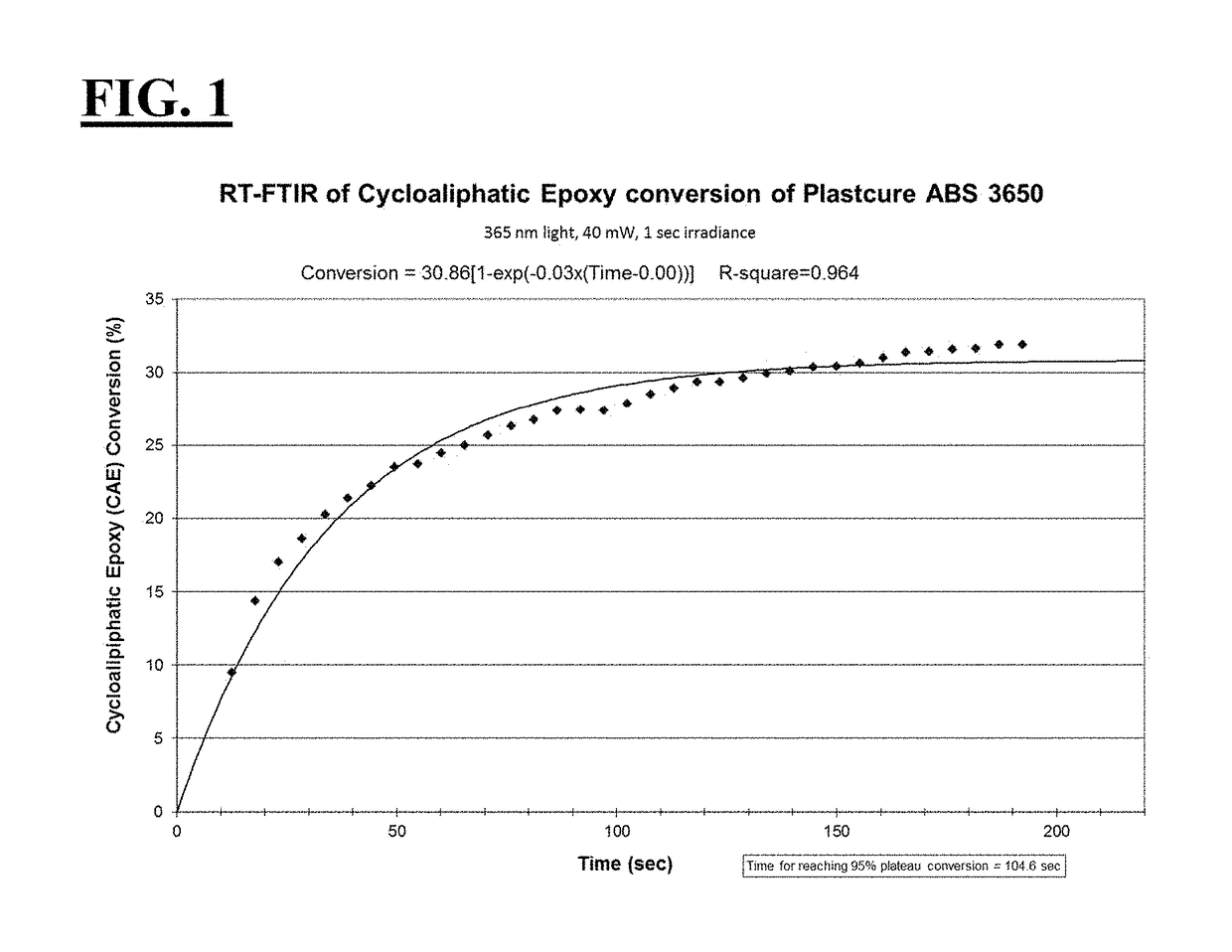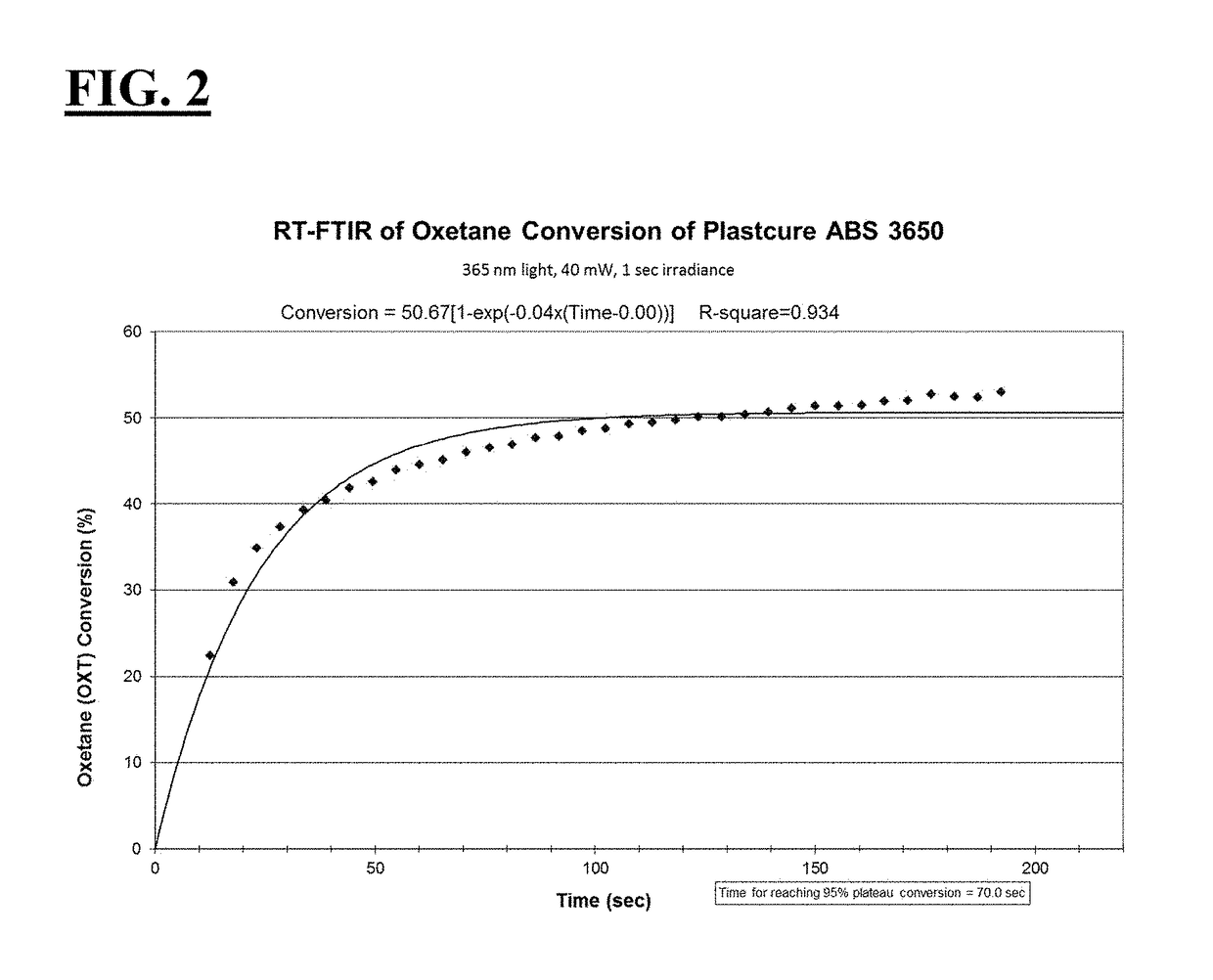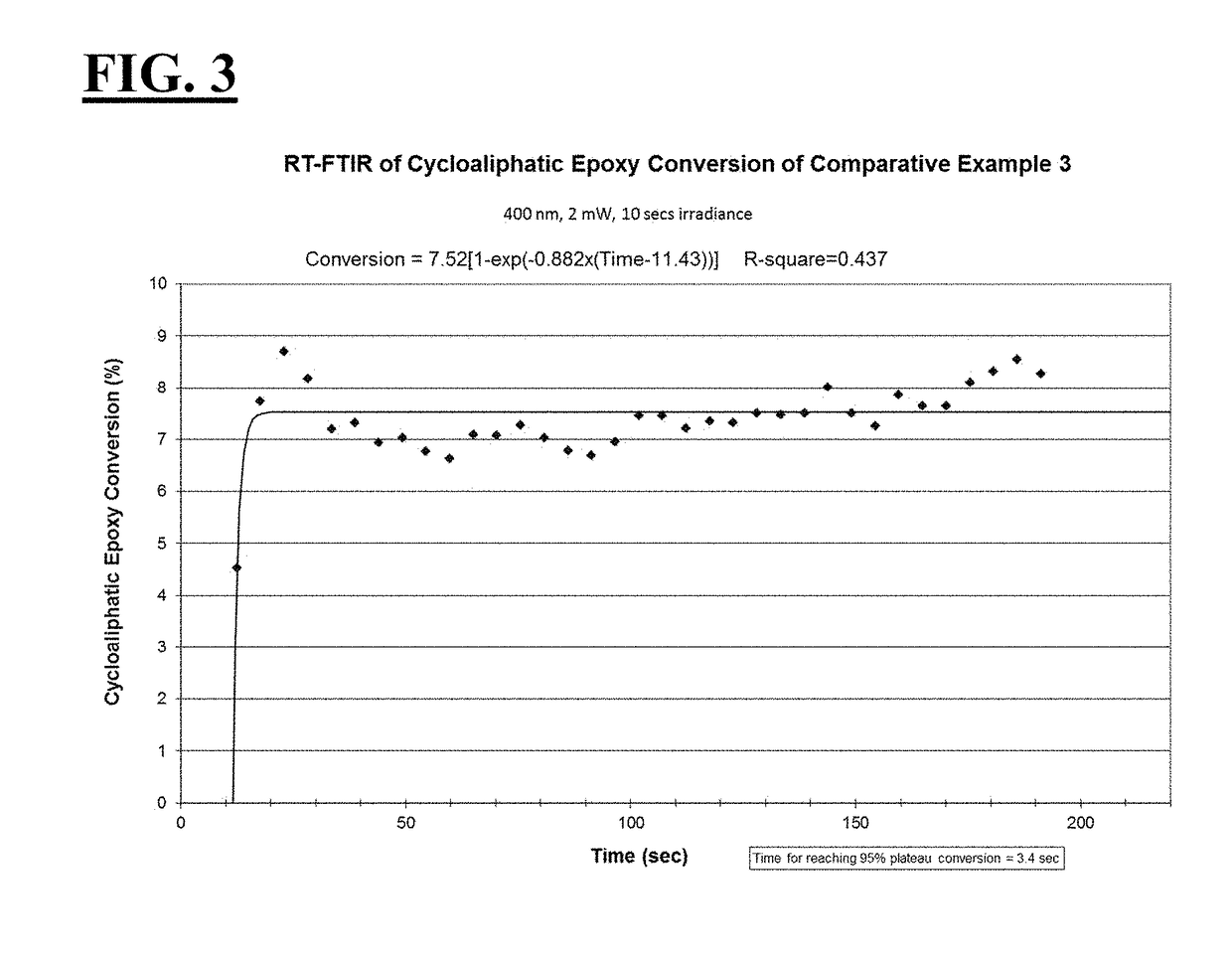Liquid, hybrid uv/vis radiation curable resin compositions for additive fabrication
a technology of additive fabrication and composition, applied in additive manufacturing, manufacturing tools, coatings, etc., can solve the problems of significant power output of laser-based systems, especially those operating, nm, and not without drawbacks
- Summary
- Abstract
- Description
- Claims
- Application Information
AI Technical Summary
Benefits of technology
Problems solved by technology
Method used
Image
Examples
examples
[0180]These examples illustrate embodiments of the liquid radiation curable resins for additive fabrication of the instant invention. Table 1 describes the various components of the liquid radiation curable resins for additive fabrication used in the present examples.
Test Methodology
[0181]To measure polymerization rate (cure speed) of each example, a Real Time Fourier Transform Infrared (FTIR) spectroscopy was used. To increase the data acquisition frequency as well as resolution, a mercury cadmium telluride (MCT) detector was used. Instead of transmission mode, Attenuated Total Reflection (ATR) setup was used. All polymerization rate measurements were performed using the Thermo Scientific Nicolet 8700 model. The Table below shows the experimental conditions setup for the measurement. Under this condition, a total of 41 spectra for 200 seconds were obtained for each measurement:
Number of scans4Resolution4Data collection typeReal TimeProfile typeRampTime sequenceSave 200 secondsUse r...
examples 1-8
[0188]First, a base resin for additive fabrication was prepared according to well-known methods in the art by combining an oxetane component, a cycloaliphatic epoxide component, a polyol component, a glycidyl ether epoxide component, and an acrylate component.
TABLE 1Resin Base 1 for other experimentsValues are listed in parts by weightComponent\FormulaResin Base 1OXT-101 (3-Ethyl-3-hydroxymethyl-oxetane)10.5UVR6105 ((3′,4′-Epoxycyclohexane)methyl36.83,4-epoxycyclohexylcarboxylate)PolyTHF-1000 (Polytetramethylene glycol MW1000)10.5E828 (Bisphenol A Diglycidyl Ether)21.1Ebecryl 3700 (Bisphenol A Diglycidyl Diacrylate)21.1
TABLE 2Values are listed in parts by weight unless otherwise denotedComparativeComparativeComparativeComponentEx 1Ex 2Ex 3Resin Base 197.0 97.0 96.0 TPO1.01.01.0Irgacure PAG 1032.0——Irgacure PAG 121—2.0—CPI 400——3.0Cycloaliphatic EpoxyInsufficientInsufficient 3.4 seconds(CAE) T95 time to cureto Measureto Measureto 95% plateauconversionPlateau Conversion ofInsufficient...
PUM
| Property | Measurement | Unit |
|---|---|---|
| irradiance | aaaaa | aaaaa |
| wavelength | aaaaa | aaaaa |
| wavelengths | aaaaa | aaaaa |
Abstract
Description
Claims
Application Information
 Login to View More
Login to View More - R&D
- Intellectual Property
- Life Sciences
- Materials
- Tech Scout
- Unparalleled Data Quality
- Higher Quality Content
- 60% Fewer Hallucinations
Browse by: Latest US Patents, China's latest patents, Technical Efficacy Thesaurus, Application Domain, Technology Topic, Popular Technical Reports.
© 2025 PatSnap. All rights reserved.Legal|Privacy policy|Modern Slavery Act Transparency Statement|Sitemap|About US| Contact US: help@patsnap.com



